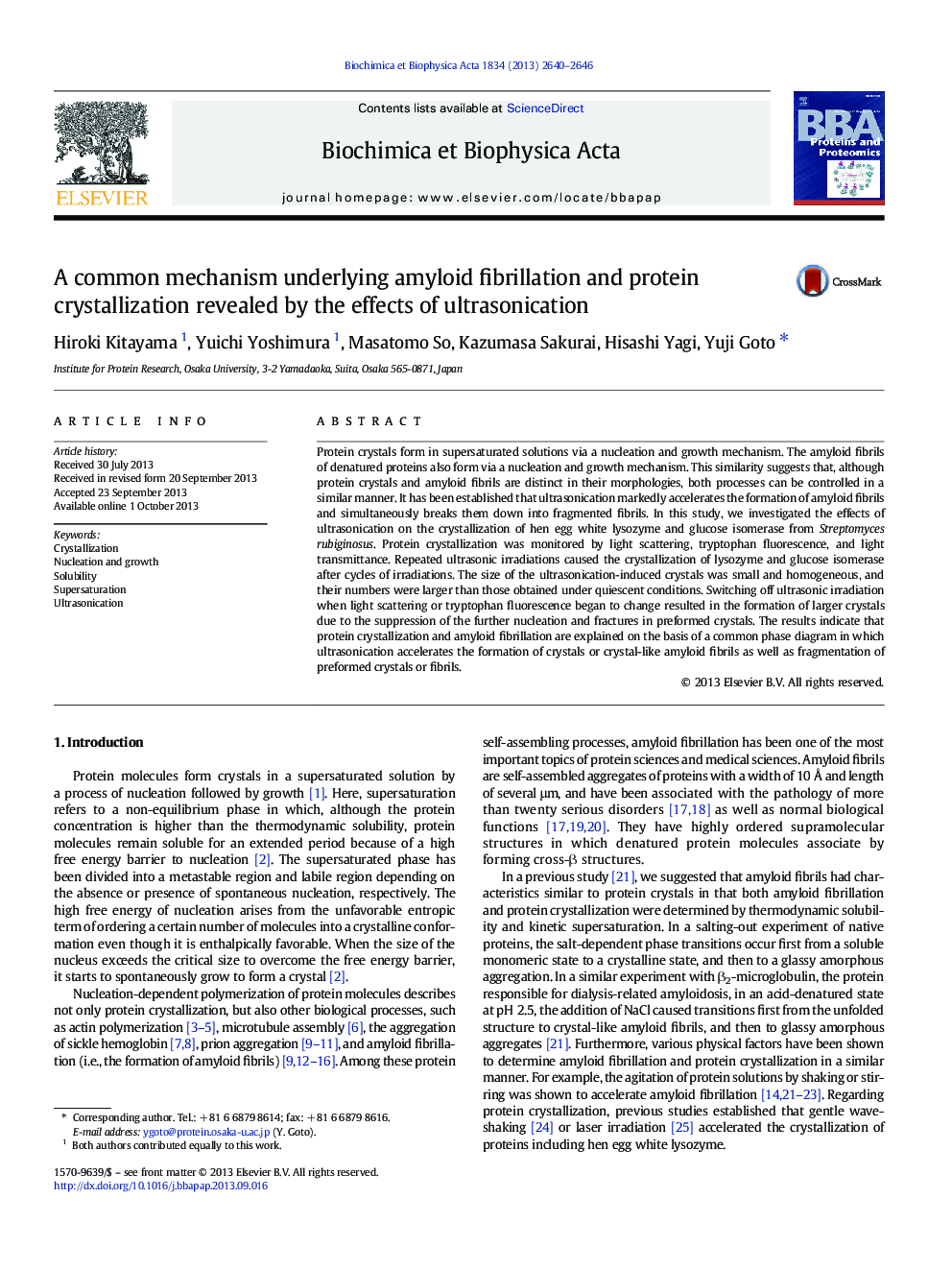| Article ID | Journal | Published Year | Pages | File Type |
|---|---|---|---|---|
| 7560906 | Biochimica et Biophysica Acta (BBA) - Proteins and Proteomics | 2013 | 7 Pages |
Abstract
Protein crystals form in supersaturated solutions via a nucleation and growth mechanism. The amyloid fibrils of denatured proteins also form via a nucleation and growth mechanism. This similarity suggests that, although protein crystals and amyloid fibrils are distinct in their morphologies, both processes can be controlled in a similar manner. It has been established that ultrasonication markedly accelerates the formation of amyloid fibrils and simultaneously breaks them down into fragmented fibrils. In this study, we investigated the effects of ultrasonication on the crystallization of hen egg white lysozyme and glucose isomerase from Streptomyces rubiginosus. Protein crystallization was monitored by light scattering, tryptophan fluorescence, and light transmittance. Repeated ultrasonic irradiations caused the crystallization of lysozyme and glucose isomerase after cycles of irradiations. The size of the ultrasonication-induced crystals was small and homogeneous, and their numbers were larger than those obtained under quiescent conditions. Switching off ultrasonic irradiation when light scattering or tryptophan fluorescence began to change resulted in the formation of larger crystals due to the suppression of the further nucleation and fractures in preformed crystals. The results indicate that protein crystallization and amyloid fibrillation are explained on the basis of a common phase diagram in which ultrasonication accelerates the formation of crystals or crystal-like amyloid fibrils as well as fragmentation of preformed crystals or fibrils.
Related Topics
Physical Sciences and Engineering
Chemistry
Analytical Chemistry
Authors
Hiroki Kitayama, Yuichi Yoshimura, Masatomo So, Kazumasa Sakurai, Hisashi Yagi, Yuji Goto,
